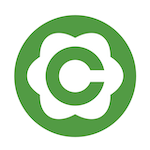
I am thinking of starting an online newsletter so that I can build a central space for my audience. In this way, rather than relying on social media or other means, I will be able to connect with them directly. Not only will this provide an efficient way to promote my products and services, but it will also be cost-effective.
Now, being that I am not familiar with SaaS providers, I cannot decide which of the many options is best for me. I have a small budget and have only just published my first book. I would also like to reach my audience with details about workshops and book signings.
With consideration for the above and other essential details I should know about, can you help me make an informed decision?

Don’t worry, starting an online newsletter is a great way to engage with your audience directly, promote your products and services, and build a loyal community.
Create a paid membership newsletter and increase your income.
Newsletter Solutions…
Now, since you’re working with a small budget and have specific needs like promoting workshops and book signings, let’s evaluate the following platforms based on their features, pricing, ease of use, and suitability for your goals.
1. Mailchimp (example)
Features
- Free Plan: Offers up to 500 subscribers and 3,500 emails per month.
- Ease of Use: User-friendly interface with a drag-and-drop email editor.
- Automation: Basic automation features for welcome emails, birthday emails, and more.
- Templates: A wide variety of customizable templates.
- Analytics: Comprehensive reporting and analytics tools.
Pricing
- Free: Up to 500 subscribers.
- Essentials: Starts at $13/month for 500 contacts, with more features.
- Standard: $20/month for advanced features like custom templates and enhanced automation.
- Premium: $350/month for large businesses with advanced needs.
Pros
- Comprehensive free plan.
- Easy to use for beginners.
- Strong analytics and reporting.
Cons
- Can become expensive as your list grows.
- Limited automation in the free plan.
2. ConvertKit
Features
- Free Plan: Up to 1,000 subscribers with unlimited landing pages and forms.
- Ease of Use: Intuitive interface, especially for creators and bloggers.
- Automation: Advanced automation with visual workflows.
- Templates: Fewer design options but clean and functional.
- Analytics: Detailed reporting on email performance.
Pricing
- Free: Up to 1,000 subscribers.
- Creator: Starts at $9/month for advanced features like automation.
- Creator Pro: $25/month for priority support and more advanced features.
Pros
- Generous free plan with up to 1,000 subscribers.
- Excellent for automation and segmentation.
- Specifically designed for creators and entrepreneurs.
Cons
- Limited design customization.
- Some features locked behind higher-tier plans.
3. Beehiive
Features
- Free Plan: Unlimited subscribers with core features.
- Ease of Use: Designed with simplicity and ease of use in mind.
- Automation: Basic automation options available.
- Templates: Focuses on a clean, minimalist design.
- Analytics: Provides essential analytics for newsletter performance.
Pricing
- Free: Unlimited subscribers.
- Growth: $29/month for advanced features and customization.
- Scale: $99/month for large-scale needs.
Pros
- Unlimited subscribers on the free plan.
- Clean and easy-to-use interface.
- Focuses on content creators and bloggers.
Cons
- Limited advanced features on the free plan.
- Less established compared to other platforms.
4. Constant Contact
Features
- Free Plan: No free plan, but a 60-day free trial is available.
- Ease of Use: User-friendly with a drag-and-drop editor.
- Automation: Advanced automation options.
- Templates: Extensive library of customizable templates.
- Analytics: Robust analytics and reporting tools.
Pricing
- Core: Starts at $9.99/month for basic features.
- Plus: $45/month for more advanced features.
Pros
- Strong customer support and resources.
- Extensive template library.
- Good for businesses of all sizes.
Cons
- No free plan.
- Can be more expensive compared to others.
Recommendations
Given your needs, here’s a more focused recommendation:
- ConvertKit: If you are looking for a platform that excels in automation and is designed for creators and entrepreneurs, ConvertKit is a strong choice. The free plan with up to 1,000 subscribers is generous, and the platform is intuitive.
- Mailchimp: If you prefer a platform with robust analytics and a variety of templates, Mailchimp is a good option. The free plan is sufficient for starting out, and it offers scalability as your subscriber list grows.
- Beehiiv: For a straightforward and clean interface with the benefit of unlimited subscribers on the free plan, Beehiiv is appealing. It’s a newer platform but focuses well on content creators.
Action Steps
- Define Your Goals: Clarify what you want to achieve with your newsletter (e.g., increasing book sales, promoting events, sharing educational content).
- Sign Up for Free Trials: Take advantage of free trials or free plans to test out Mailchimp, ConvertKit, and Beehiiv. This will give you hands-on experience with their interfaces and features.
- Evaluate and Choose: Based on your experience with the trials, choose the platform that best fits your needs and budget.
- Plan Your Content: Outline the type of content you will send, how often, and create a content calendar.
- Build Your List: Use existing contacts, social media, and your website to build your subscriber list.
- Create and Send Your First Newsletter: Start with a welcome email and then regularly send out newsletters with valuable content.
Starting with these steps and platforms should help you build an effective and engaging newsletter.
